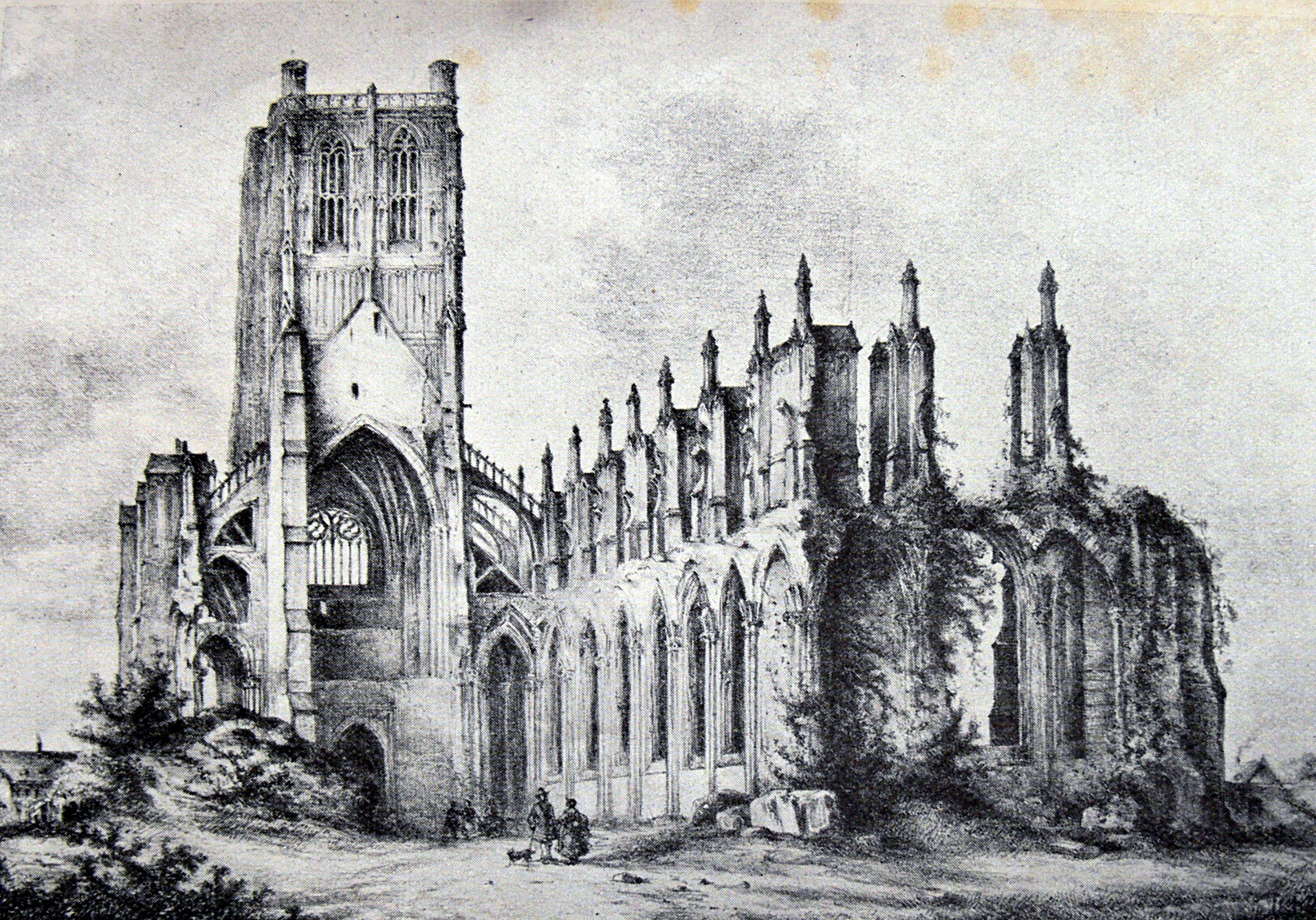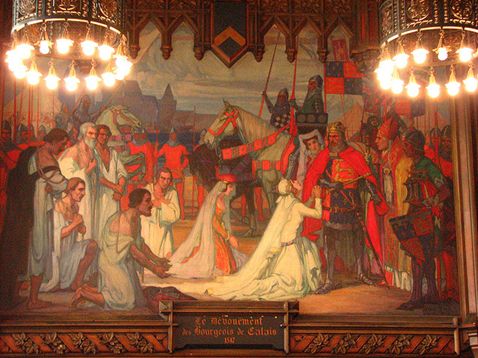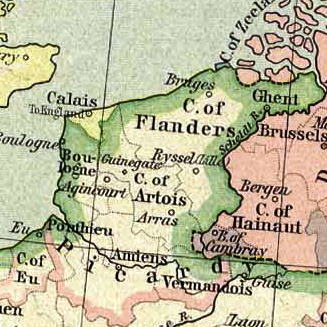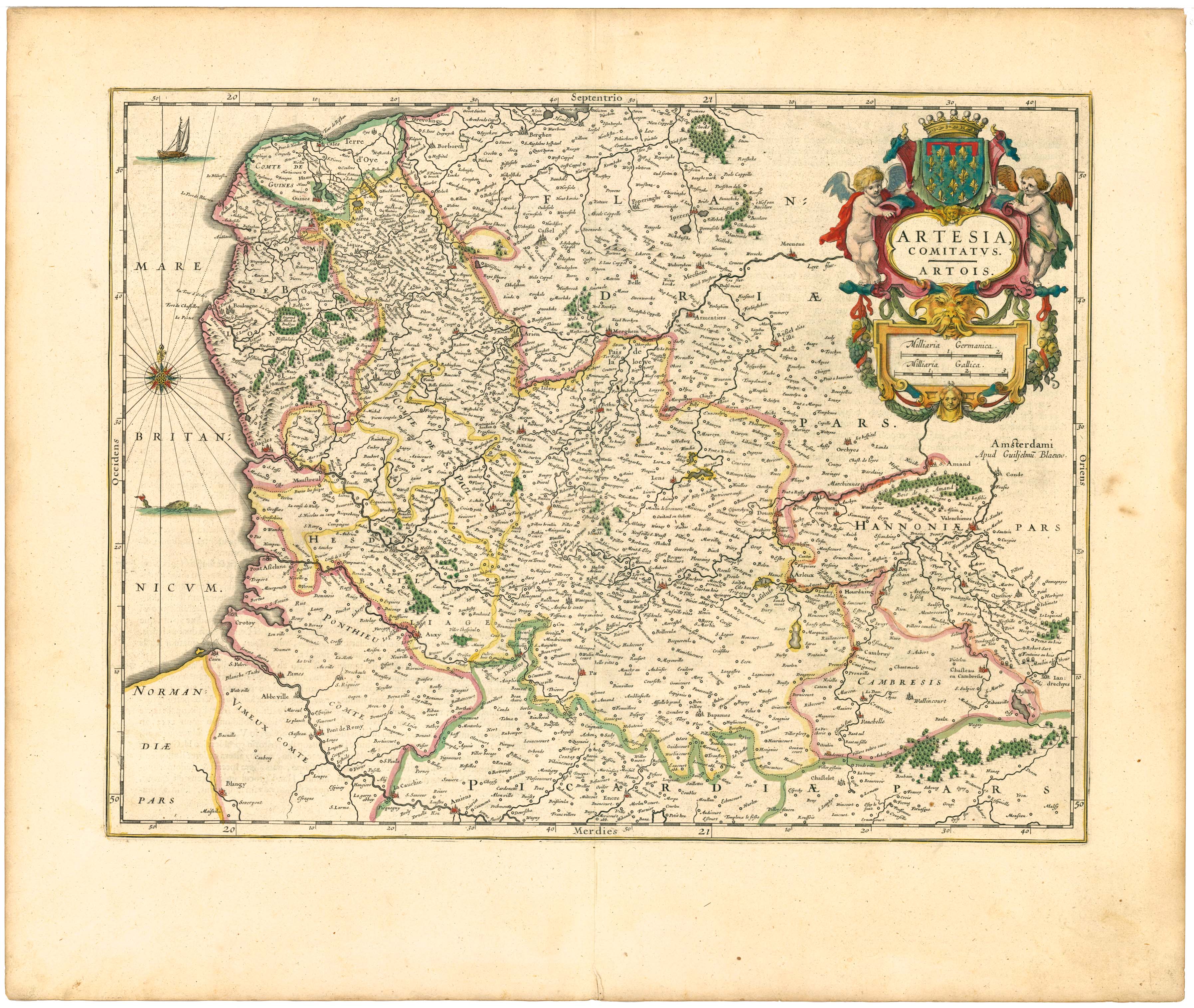|
Saint-Omer
Saint-Omer (; ; Picard: ''Saint-Onmé'') is a commune and sub-prefecture of the Pas-de-Calais department in France. It is west-northwest of Lille on the railway to Calais, and is located in the Artois province. The town is named after Saint Audomar, who brought Christianity to the area. The canalised section of the river Aa begins at Saint-Omer, reaching the North Sea at Gravelines in northern France. Below its walls, the Aa connects with the Neufossé Canal, which ends at the river Lys. History Saint-Omer first appeared in the writings during the 7th century under the name of Sithiu (Sithieu or Sitdiu), around the Saint-Bertin abbey founded on the initiative of Audomar, (Odemaars or Omer). Omer, bishop of Thérouanne, in the 7th century established the Abbey of Saint Bertin, from which that of Notre-Dame was an offshoot. Rivalry and dissension, which lasted till the French Revolution, soon sprang up between the two monasteries, becoming especially virulent when ... [...More Info...] [...Related Items...] OR: [Wikipedia] [Google] [Baidu] |
Communauté D'agglomération Du Pays De Saint-Omer
The Communauté d'agglomération du Pays de Saint-Omer (CAPSO) is located in the Pas-de-Calais ''département'', in northern France. It was formed on 1 January 2017 by the merger of the former Communauté d'agglomération de Saint-Omer, the Communauté de communes du Canton de Fauquembergues, the Communauté de communes du pays d'Aire and the Communauté de communes de la Morinie. Its seat is Longuenesse.CA du Pays de Saint-Omer (N° SIREN : 200069037) BANATIC, accessed 11 November 2024. Its area is 543.6 km2. Its population was 105,169 in 2018.Comparateur de territoire IN ... [...More Info...] [...Related Items...] OR: [Wikipedia] [Google] [Baidu] |
Aa (France)
The Aa (; ) is a river in northern France that is 93 km (58 miles) long. Originating near the village of Bourthes and emptying into the North Sea near Gravelines, the Aa is located near the north-eastern limit of the English Channel. The Aa has been canalized for most of its length and forms much of the border between the regions of Pas-de-Calais and Nord (département), Nord. Hydronymy The word "Aa" in Old Dutch means "water" (it still retains the name in modern Dutch and local West Flemish), and can be traced via Proto-Germanic back to its original Proto-Indo-European language, Indo-European form. The river is very well-known to crossword enthusiasts ("the first river in France"). The river is known in Neo-Latin, Modern Latin as ''Agnio'', but has been recorded in many forms in Medieval Latin, starting with ''Agnona'' in 648 AD. In local Picard language, Picard dialects, the Aa is traditionally called the ''Abbe''. Geography The river's geography is divided into two part ... [...More Info...] [...Related Items...] OR: [Wikipedia] [Google] [Baidu] |
Abbey Of Saint Bertin
The Abbey of Saint Bertin was a Benedictine monastic abbey in Saint-Omer, France. The buildings are now in ruins, which are open to the public. It was initially dedicated to but was rededicated to its second abbot, . The abbey is known for its Latin cartulary (') whose first part is attributed to Folcwin. The abbey was founded on the banks of the Aa in the 7th century by Bishop Audomar of Thérouanne, who is now better known as . He sent the monks Bertin, Momelin, and Ebertram from Sithiu (now St-Omer) to proselytize among the pagans in the region. The abbey soon became one of the most influential monasteries in northern Europe and ranked in importance with Elnon (now St-Amand Abbey) and . Its library included the codex of the Leiden Aratea, from which two copies were made. The Annals of St Bertin are an important source of the history of 9th-century France. Already in the 9th century, the abbey had a priory in Poperinge. A Romanesque church was constructed in the ... [...More Info...] [...Related Items...] OR: [Wikipedia] [Google] [Baidu] |
Calais
Calais ( , , traditionally , ) is a French port city in the Pas-de-Calais department, of which it is a subprefecture. Calais is the largest city in Pas-de-Calais. The population of the city proper is 67,544; that of the urban area is 144,625 (2020). and it is reflected in the city's name in the local Picard language, ''Calés''. Other archaic names for the city are Portuguese ''Calêsio'' and German ''Kalen''. ''Kales'', the city's historic name in Dutch and West Flemish (once spoken in the area) was retained until more recently in the name for the Strait of Dover, ''Nauw van Kales'', and is still used in Dutch sources wishing to emphasise former linguistic ties to the area. Though the modern French spelling of ''Calais'' gradually supplanted other variants in English, the pronunciation () persisted and survives in other towns named for the European city including Calais, Maine, and Calais, Vermont, in the United States. In " De Gustibus" (1855), Robert Browning r ... [...More Info...] [...Related Items...] OR: [Wikipedia] [Google] [Baidu] |
Audomar
Audomar (died 670), better known as Omer, was a bishop of Thérouanne, after whom nearby Saint-Omer in northern France was named. He is venerated as a saint in the Catholic and Eastern Orthodox churches. Biography Audomar was born of a distinguished family of Coutances, then under the Frankish realm of Neustria, towards the close of the 6th or the beginning of the 7th century. After the death of his mother, he entered with his father the abbey of Luxeuil in the Diocese of Besançon, probably about 615. Under the direction of Eustachius, Omer studied the Scriptures, in which he acquired remarkable proficiency. When King Dagobert requested the appointment of a bishop for the important city of Thérouanne, the capital of the ancient territory of the Morini in Neustria, he was appointed and consecrated in 637. Though the Morini had received Christianity from Fuscian and Victoricus, and later Antmund and Adelbert, nearly every vestige of Christianity had disappeared. In 649 o ... [...More Info...] [...Related Items...] OR: [Wikipedia] [Google] [Baidu] |
County Of Flanders
The County of Flanders was one of the most powerful political entities in the medieval Low Countries, located on the North Sea coast of modern-day Belgium and north-eastern France. Unlike the neighbouring states of Duchy of Brabant, Brabant and County of Hainaut, Hainaut, it was within the territory of the France in the Middle Ages, Kingdom of France. The counts of Flanders held the most northerly part of the kingdom, and were among the original twelve Peerage of France#Under the Monarchy: feudal period and Ancien Régime, peers of France. For centuries, the economic activity of the Flemish cities, such as Ghent, Bruges and Ypres, made Flanders one of the most affluent regions in Europe, and also gave them strong international connections to trading partners. Up to 1477, the core area under French suzerainty was west of the Scheldt and historians call this "Royal Flanders" (Dutch: ''Kroon-Vlaanderen'', French: ''Flandre royale''). Aside from this, the counts, from the 11th centu ... [...More Info...] [...Related Items...] OR: [Wikipedia] [Google] [Baidu] |
Saint Audomar
Audomar (died 670), better known as Omer, was a bishop of Thérouanne, after whom nearby Saint-Omer in northern France was named. He is venerated as a saint in the Catholic and Eastern Orthodox churches. Biography Audomar was born of a distinguished family of Coutances, then under the Frankish realm of Neustria, towards the close of the 6th or the beginning of the 7th century. After the death of his mother, he entered with his father the abbey of Luxeuil in the Diocese of Besançon, probably about 615. Under the direction of Eustachius, Omer studied the Scriptures, in which he acquired remarkable proficiency. When King Dagobert requested the appointment of a bishop for the important city of Thérouanne, the capital of the ancient territory of the Morini in Neustria, he was appointed and consecrated in 637. Though the Morini had received Christianity from Fuscian and Victoricus, and later Antmund and Adelbert, nearly every vestige of Christianity had disappeared. In 649 ... [...More Info...] [...Related Items...] OR: [Wikipedia] [Google] [Baidu] |
Artois
Artois ( , ; ; Picard: ''Artoé;'' English adjective: ''Artesian'') is a region of northern France. Its territory covers an area of about 4,000 km2 and it has a population of about one million. Its principal cities include Arras (Dutch: ''Atrecht''), Saint-Omer, Lens, and Béthune. It is the eponym for the term ''Artesian''. Location Artois occupies the interior of the Pas-de-Calais ''département'',"Artois" in '' The New Encyclopædia Britannica''. Chicago: Encyclopædia Britannica Inc., 15th ed., 1992, Vol. 1, p. 607. the western part of which constitutes the former Boulonnais. Artois roughly corresponds to the arrondissements of Arras, Béthune, Saint Omer, and Lens, and the eastern part of the arrondissement of Montreuil. It occupies the western end of the coalfield which stretches eastward through the neighbouring Nord ''département'' and across central Belgium. History Originally a feudal county itself, Artois was annexed by the county of Flanders. I ... [...More Info...] [...Related Items...] OR: [Wikipedia] [Google] [Baidu] |
County Of Artois
The County of Artois (, , ) was a historic province of the Kingdom of France, held by the Dukes of Burgundy from 1384 until 1477/82, and a state of the Holy Roman Empire from 1493 until 1659. Present-day Artois lies in northern France, near the border with Belgium. Its territory has an area of around and a population of about one million. Its principal cities include Arras (), Calais (), Boulogne-sur-Mer (), Saint-Omer (, Lens and Béthune. It forms the interior of the French département of Pas-de-Calais. In northern Gaul the Belgic tribe of the Atrebates lived in the future area of Artois, the name of which () reflects theirs. A Carolingian feudal county in its own right from the late 8th century, Artois was annexed by the County of Flanders (898 onwards). It came to France in 1180 as the dowry of a 10-year-old Flemish noblewoman, Isabelle of Hainaut, and was again made a separate county in 1237 for Robert, a grandson of Isabelle. Through inheritance, Artois once a ... [...More Info...] [...Related Items...] OR: [Wikipedia] [Google] [Baidu] |
Gravelines
Gravelines ( , ; ) is a Communes of France, commune in the Nord (French department), Nord departments of France, department in Northern France. It lies at the mouth of the river Aa (France), Aa southwest of Dunkirk, France, Dunkirk. It was formed in the 12th century around the mouth of a canal built to connect Saint-Omer with the sea. As it was on the western borders of Habsburg Spain, Spanish territory in Flanders it became heavily fortified, some of which remains. There is a market in the town square (Place Charles Valentin) on Fridays. The "Arsenal" approached from the town square is home to an extensive and carefully displayed art collection. There are modern bronze statues in the grounds. The town is also home to French basketball club BCM Gravelines. The Gravelines Belfry is one of 56 belfries of Belgium and France that is inscribed on the UNESCO World Heritage List in recognition of its architecture and importance in the history of municipal power in the region. Histor ... [...More Info...] [...Related Items...] OR: [Wikipedia] [Google] [Baidu] |
Lille
Lille (, ; ; ; ; ) is a city in the northern part of France, within French Flanders. Positioned along the Deûle river, near France's border with Belgium, it is the capital of the Hauts-de-France Regions of France, region, the Prefectures in France, prefecture of the Nord (French department), Nord Departments of France, department, and the main city of the Métropole Européenne de Lille, European Metropolis of Lille. The city of Lille proper had a population of 236,234 in 2020 within its small municipal territory of , but together with its French suburbs and exurbs the Lille metropolitan area (French part only), which extends over , had a population of 1,515,061 that same year (January 2020 census), the fourth most populated in France after Paris, Lyon, and Marseille. The city of Lille and 94 suburban French municipalities have formed since 2015 the Métropole Européenne de Lille, European Metropolis of Lille, an Indirect election, indirectly elected Métropole, metropolitan ... [...More Info...] [...Related Items...] OR: [Wikipedia] [Google] [Baidu] |
Pas-de-Calais
The Pas-de-Calais (, ' strait of Calais'; ; ) is a department in northern France named after the French designation of the Strait of Dover, which it borders. It has the most communes of all the departments of France, with 890, and is the 8th most populous. It had a population of 1,465,278 in 2019.Populations légales 2019: 62 Pas-de-Calais INSEE The Calais Passage connects to the Port of Calais on the . The Pas-de-Calais borders the departments of [...More Info...] [...Related Items...] OR: [Wikipedia] [Google] [Baidu] |








